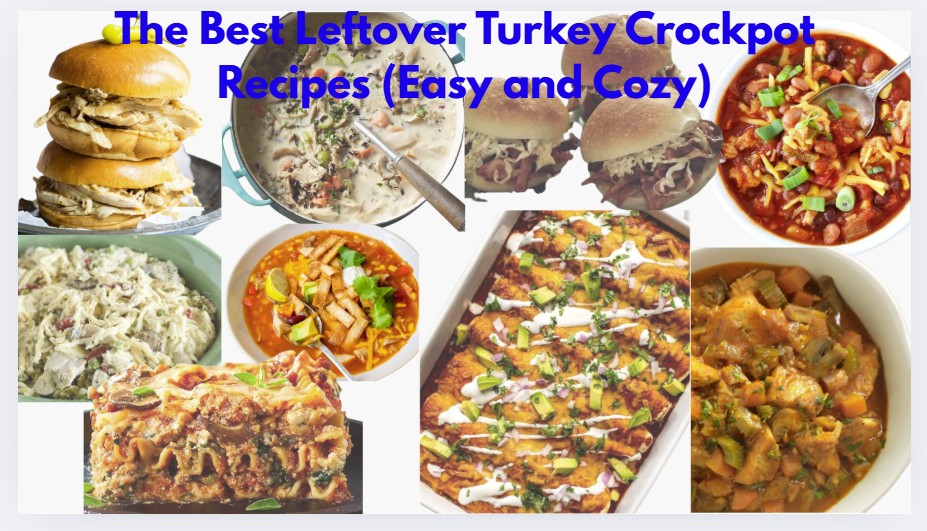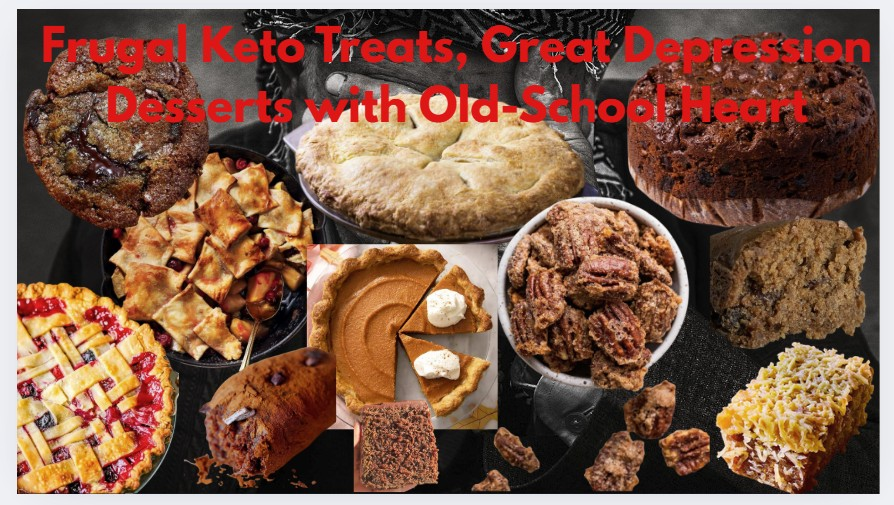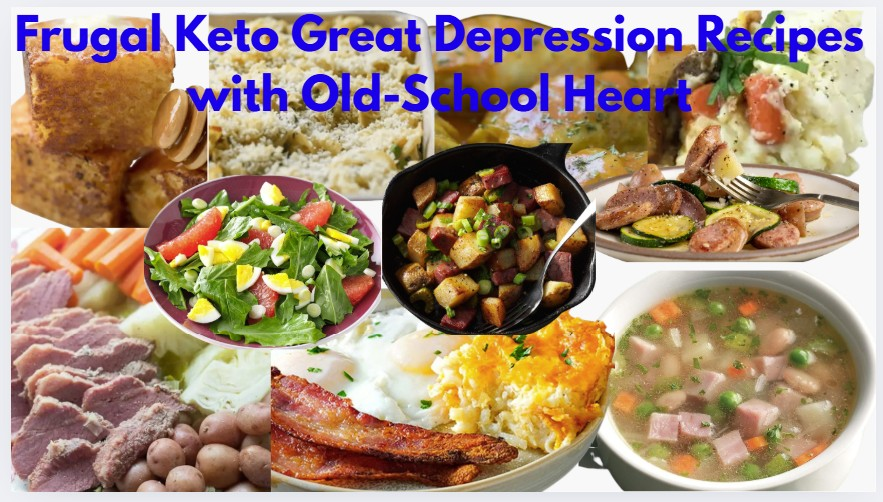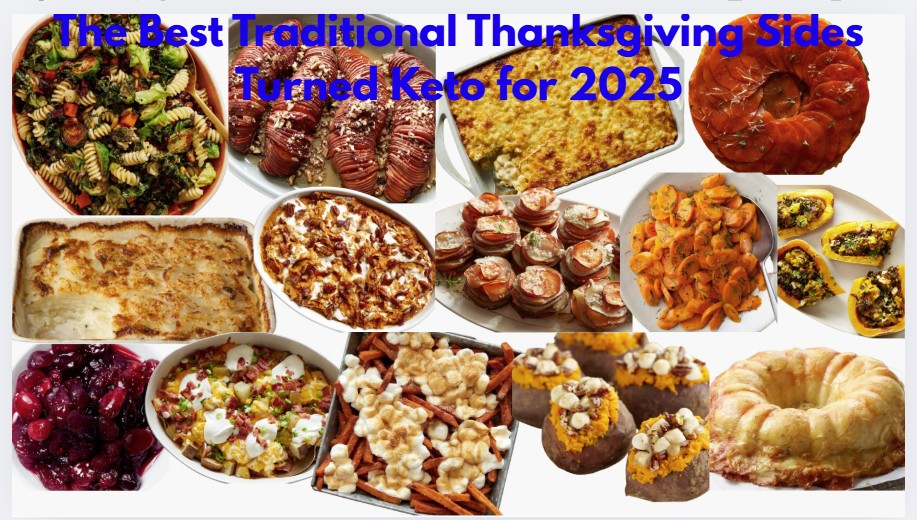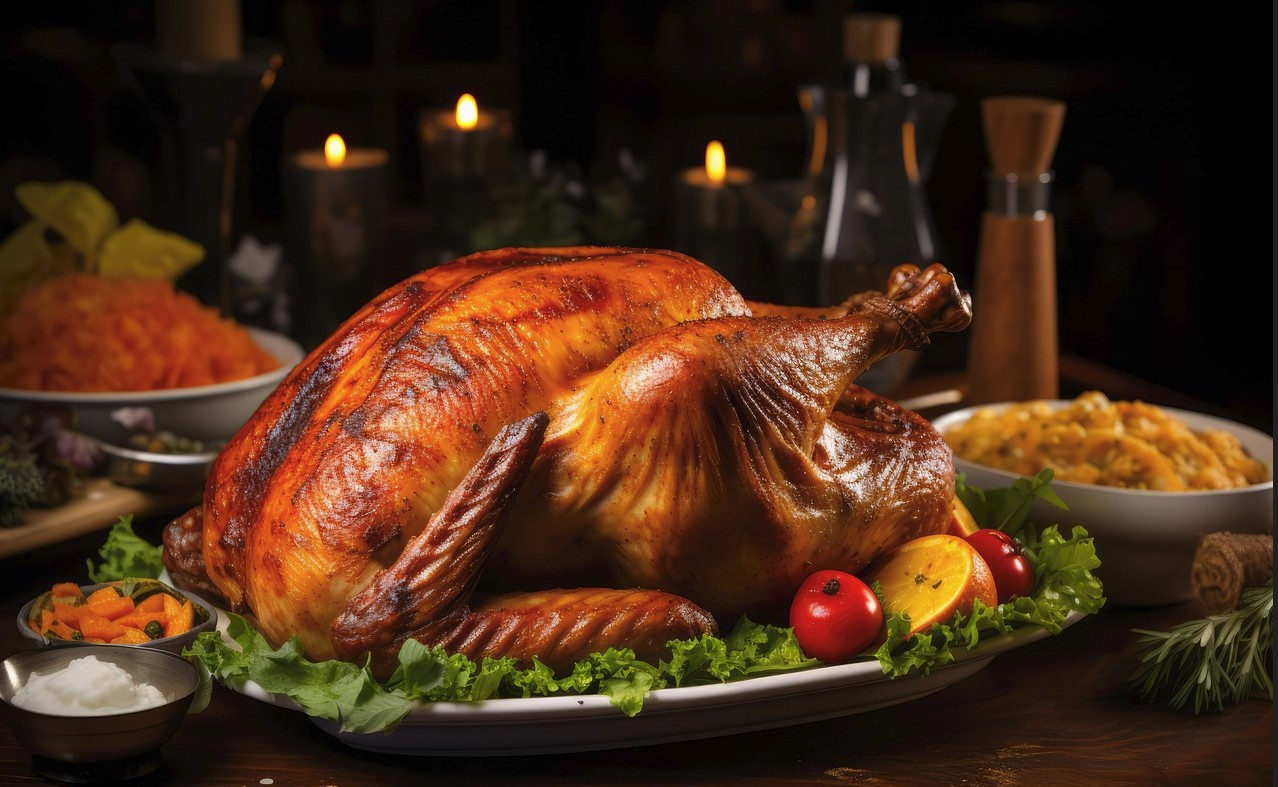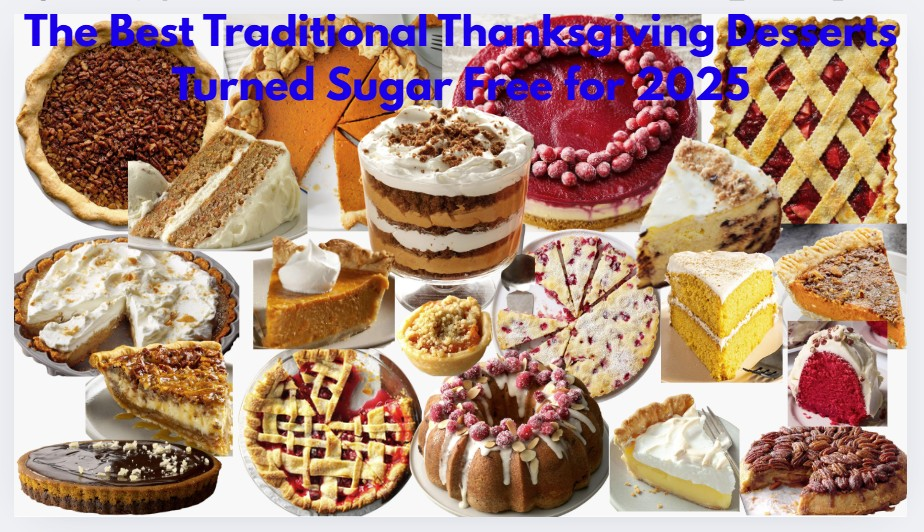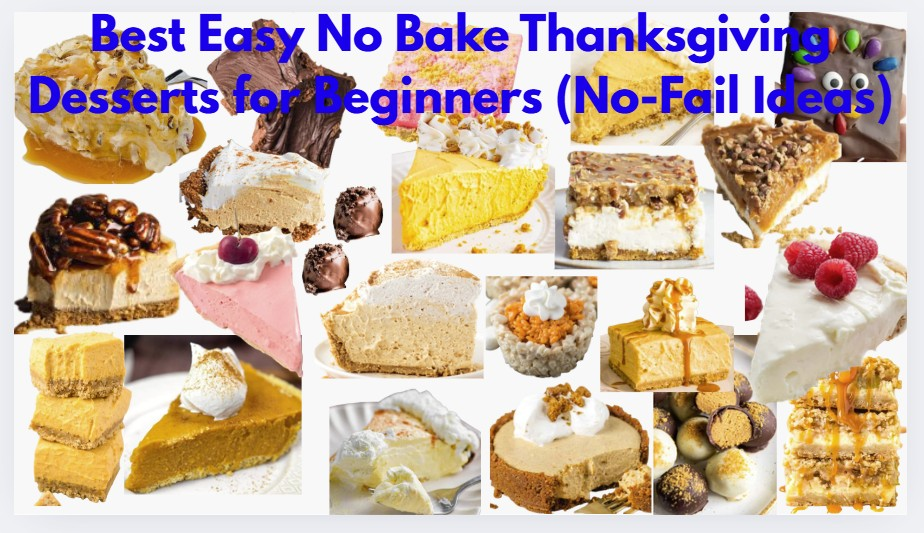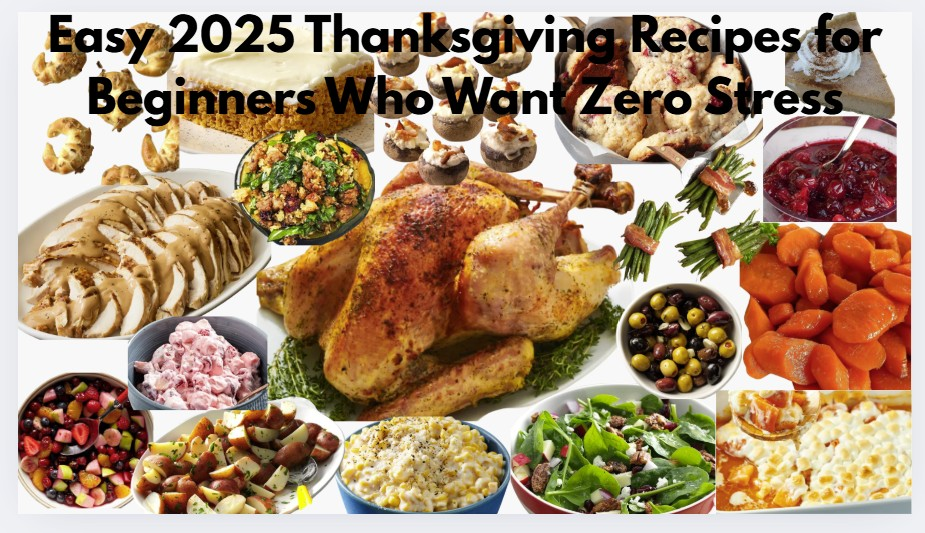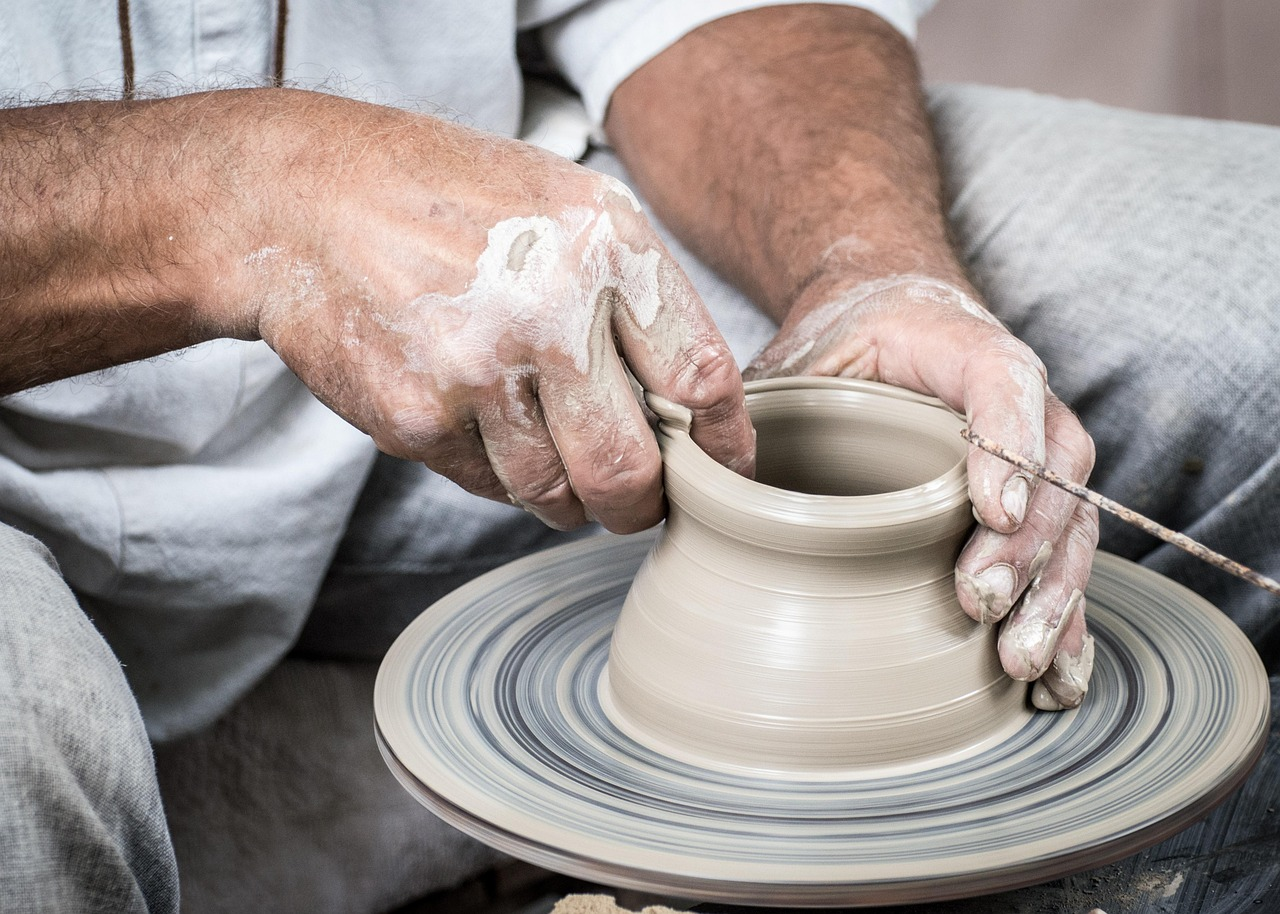Selling crafts in 2025 can be more profitable than ever—as real sellers prove week after week. Profitable crafts to sell goes beyond simple handmade items to include personalized home decor, resin jewelry, natural bath products, and even digital goods like printables. These sellers are tapping into both current trends and smart marketing strategies to turn their skills into steady income.
After trying several approaches myself, I learned the key is to focus on products that balance creativity with demand. This post shares what’s genuinely selling well this year, drawn from real experience and proven results. By the end, you’ll have actionable insights to help you pick crafts that fit your style and have a solid chance of making money in 2025.

What Makes a Craft Profitable?
When deciding which crafts to focus on for 2025, the definition of “profitable” goes beyond just selling a lot. It’s about balancing several key factors that directly impact the potential to earn money consistently and sustainably. Profitability in crafts depends on more than just the skill behind the product. Knowing what drives costs, demand, and growth can turn a fun hobby into a real business.
Here’s what you need to keep in mind to spot a craft with genuine profit potential.
Cost of Materials and Production
The cost of materials sets the baseline for how much you need to charge to cover expenses and make a profit. Crafts with low or moderately priced materials tend to offer better margins. For example, using common supplies like wax for candles or recycled fabrics can keep your production cost low while maintaining quality. On the other hand, expensive raw materials or time-consuming techniques can eat into profits if you don’t price carefully.
Think of it like baking: if your ingredients are pricey but your cake only sells for a low price, you lose money no matter how tasty it is. The same applies to crafts.
Demand and Market Fit
Even the most beautiful or well-made craft won’t sell if people aren’t looking for it. Researching current market trends (and watching how they evolve) is crucial. Demand can come from seasonal interest, lifestyle trends, or cultural shifts. For example, personalized home décor items have gained traction as people look to make their living spaces unique.
High demand means more customers, which can justify higher prices and increase overall sales volume. Observing what top sellers in your craft niche are doing offers valuable clues about what buyers want.
Pricing Strategy
Setting the right price is an art form itself. Your pricing should cover:
- Materials and labor costs
- Overhead expenses (packaging, shipping, tools)
- A reasonable profit margin
Competitive pricing is key—you want to stay attractive but avoid undervaluing your work. Shoppers appreciate transparency and are often willing to pay more if you can communicate your craft’s unique value, such as customization or sustainability. Pricing too low can hurt your brand and make it harder to scale.
Scalability and Production Efficiency
Crafts that can be scaled without massive increases in time or cost typically perform better in profit. For example, making custom jewelry that uses simple designs and doesn’t require long hours per piece allows you to increase output if demand rises. On the flip side, crafts that require intensive handwork for every piece may limit how much you can grow.
Finding ways to speed up production, such as batch-making or using tools like laser cutters, can help scale your craft business and boost income.
Staying on Trend Without Losing Identity
Trends impact what sells, but jumping on every fad usually backfires. The best sellers strike a balance by blending current styles with their unique touch. This approach helps build a loyal customer base that comes back for more, even as trends shift.
Listening to customer feedback and watching social media can show which trends have staying power. For example, eco-friendly and handmade narratives are increasingly important to buyers and add value to your product.
Personal Experience and Market Data
Profit isn’t just about numbers on paper. Real sellers back up their insights with both market data and personal experience. This combo helps avoid blindly chasing what’s popular without considering what fits their skills, style, and audience.
It’s like a musician choosing songs—not only what’s trending on the radio but what feels natural to their voice. When you pair market research with what you enjoy and can produce efficiently, profitability becomes much more achievable.

Photo by Vlada Karpovich
By balancing these factors—material costs, demand, pricing, scalability, and market knowledge—you’re positioning yourself to create crafts that don’t just sell, but sell well year after year.
Handmade Jewelry: High-Profit Classics and Trending Designs
Handmade jewelry remains a strong category for sellers aiming to combine creativity with profit. The charm lies in offering pieces that feel personal and unique, while keeping production costs manageable. Whether you’re drawn to delicate wire rings or chunky layered necklaces, certain styles and materials dominate the market in 2025. Here’s a breakdown of profitable handmade jewelry options that real sellers are banking on right now, mixing time-tested classics with up-and-coming trends.
Resin and Polymer Clay Creations
Resin and polymer clay jewelry attract buyers because of their fresh, colorful, and highly customizable nature. These materials allow makers to shape vibrant pendants, earrings, and bracelets with relative ease, even adding embedded objects like dried flowers or glitter for visual impact.
Why they sell well:
- Low material costs: Polymer clay and resin supplies are affordable yet yield striking results.
- Easy to customize: Colors and shapes can be adjusted instantly to match new trends or customer requests.
- High perceived value: Finished pieces often look more expensive than they cost to make.
- Lightweight and durable: Customers love accessories that are easy to wear daily.
This category thrives on originality. Think bold resin statement earrings or delicate clay flower studs. With minimal investment but strong artistic appeal, these items offer excellent profit margins and quick turnover.

Photo by Tima Miroshnichenko
Beaded and Engraved Pieces
Personalization remains a powerful selling point in handmade jewelry, especially on platforms like Etsy and at craft fairs. Beaded jewelry combining colorful glass, crystals, and natural stones can be transformed into meaningful keepsakes through initials, names, or dates engraved on metal charms.
What makes this category stand out:
- Customization drives sales: Buyers want one-of-a-kind pieces that reflect their identity or special moments.
- Versatility in style: From delicate seed bead anklets to chunky glass bead necklaces, there’s something for every taste.
- Product bundles: Mixed sets like matching bracelets and necklaces encourage higher order values.
- Customer loyalty: Personalized items often result in repeat buyers and word-of-mouth referrals.
Handmade beaded bracelets and engraved pendants capture both sentimental value and everyday style. Embracing these trends taps into growing demand for thoughtful, individualized gifts.
Jewelry Boxes
Jewelry boxes might not be wearable, but they remain essential companions for treasured accessories. Handmade boxes can offer a unique edge through design, material, and personalization options.
Why to consider jewelry boxes:
- Low competition in high-quality niche: Many consumers seek distinctive storage solutions beyond mass-produced options.
- Premium pricing possible: A well-crafted box with custom engraving or decorative details can command solid prices.
- Ideal for gift buyers: Jewelry boxes often sell seasonally as gift items or keepsakes.
- Cross-sell opportunities: Pair boxes with your jewelry items for bundled deals.
When designed with fine woodworking or artistic touches, jewelry boxes provide an elegant complement to your handmade pieces, enhancing your brand’s perceived value.

Eco-Friendly and Upcycled Accessories
Sustainability trends continue to shape buyer preferences, and jewelry is no exception. Eco-conscious shoppers seek items made with recycled metals, natural stones, or repurposed materials, prioritizing ethical craftsmanship.
This niche stands out for several reasons:
- Strong story appeal: Explaining how materials were recycled or sourced attracts socially aware buyers.
- Unique aesthetics: Upcycled parts and natural stones create one-of-a-kind textures and colors.
- Reduced costs, increased value: Using recycled materials often lowers expenses while boosting item uniqueness.
- Market growth: More customers are willing to pay extra to support sustainable brands.
From bracelets crafted from reclaimed wood beads to earrings featuring natural rough stones, these accessories combine style with a message. They fit well with the rising tide of conscious consumerism and create loyal, mission-driven followings.
Handmade jewelry blends artistry with demand, and knowing which designs and materials perform best puts you ahead. Whether experimenting with resin, personalized beads, custom boxes, or eco-friendly elements, these categories each offer clear paths to strong profits in 2025. Real sellers show that getting the right mix of uniqueness, quality, and storytelling wins customers consistently.
Home Decor That Sells: Stylish, Sustainable, and Custom
Home decor remains one of the strongest markets for handmade and crafted items. In 2025, buyers aren’t just looking for attractive pieces—they want decor that feels personal, supports sustainable values, and suits today’s growing preference for textured, natural, and meaningful aesthetics. The key to making decor that sells? Combine style with a purpose. Turn familiar crafts into products that fit modern homes and values. Below, you’ll find some of the most promising decor ideas, each blending artistry with smart appeal.
Macramé, Wall Hangings, and Textile Art
Textured decor like macramé has been climbing steadily and shows no signs of slowing down. Minimalist and boho styles crave the tactile richness that knotted cotton cords and soft fibers bring into a room. Wall hangings, whether small and delicate or large statement pieces, add depth and warmth to plain walls without overwhelming the space.
- Offering varied sizes helps scale your shop — smaller pieces attract casual buyers while larger wall art appeals to those ready to invest more.
- Try mixing materials like jute, wool, or even beads, to add complexity and stand out from basic offerings.
- These pieces suit many spaces, from cozy reading nooks to trendy urban apartments.
This craft taps into the long-lasting interest in handcrafted, natural materials while aligning with 2025’s focus on authentic textures.

Upcycled Furniture and Vintage-Inspired Items
Giving old furniture or vintage pieces a fresh look continues to be highly profitable. It’s more than a style trend — it’s a response to environmental awareness. Buyers love to invest in one-of-a-kind, sustainable pieces that carry a story.
- Upcycling involves painting, reupholstering, or repurposing — often with modern colors and finishes that fit contemporary homes.
- You can focus on small projects like stools or side tables, which are easier to ship and price, or take on larger pieces if you have space.
- Highlighting sustainability in your marketing can attract eco-conscious buyers willing to pay a little extra for green choices.
Creativity meets responsibility here, and both add to the product’s appeal and value.
Confetti Frame
Confetti frames are playful and colorful additions to modern walls. These typically feature a clear frame filled with brightly colored paper or fabric confetti that floats between glass panels.
- They’re lightweight, easy to ship, and customizable with different color themes for seasons or events.
- Perfect for adding a fun pop to a room without committing to heavy or complex art pieces.
- Confetti frames also work well as gifts or party decor, making them versatile in the market.
Personalized Signs and Wall Art
Customized signs and wall art remain high-demand items, especially for gifts, weddings, and milestone events. Popular techniques include woodburning, laser engraving, and hand painting.
- Personalized items often command higher prices because they feel unique and meaningful.
- Think beyond usual phrases—design options for home mottos, family names, or custom dates enhance emotional value.
- These pieces can be seasonal or timeless, offering flexibility in your product range.
Events like housewarmings and anniversaries fuel steady demand for this niche.
Resin Art
Resin art is booming thanks to its glossy, durable finish and ability to capture anything inside—from florals to glitter to abstract textures.
- Use molds for trays and coasters or freeform resin for wall art and decorative objects.
- Its shiny surface pairs well with natural wood or metallic accents for a modern vibe.
- Buyers appreciate resin’s eye-catching effects and unique look, making it popular for gifting or personal collections.
Resin crafts intersect with trends in colors and textures, creating an upscale feel.
Hand Painted Dishes
Hand painted pottery and dishes add a personal, artisan touch when customers want something beyond mass-produced tableware.
- Small plates, mugs, and bowls with floral or abstract designs attract buyers who enjoy mixing utility with art.
- Simple geometric patterns or modern brush strokes suit contemporary kitchens, while classic motifs please nostalgic tastes.
- Serving sets or seasonal collections increase buyer interest and encourage repeat sales.
This category’s blend of beauty and functionality resonates with those who cherish handmade dining experiences.

Photo by Berna T.
Painted Pots
Indoor gardening is still thriving in 2025. Painted pots offer a colorful way to brighten windowsills and tabletops while giving plants a personality boost.
- Use acrylics or outdoor-safe paints to decorate terracotta or ceramic pots with patterns, faces, or nature-inspired motifs.
- Small, budget-friendly pots are great for casual buyers; larger, artistically painted planters appeal to garden enthusiasts or gift shoppers.
- Combining pots with small succulents or air plants can turn the product into a ready gift bundle.
They fit perfectly with eco-friendly and biophilic design trends promoting a fresh and grounded lifestyle.
Woven & Knotted Decoration
Beyond traditional macramé, woven and knotted decor includes rugs, wall tapestries, and even smaller sculptural pieces.
- These crafts use traditional skills with modern designs, such as geometric patterns or bold color blocking.
- Electric tufting and simple looms let makers produce fine textured rugs priced in the hundreds, while smaller woven pieces diversify the price range.
- Woven pieces add softness and warmth to rooms, fitting into maximalist or layered styles.
The tactile appeal of these products taps into customers’ desire for sensory-rich spaces.
Candles
Candles continue to be among the most reliable sellers in home decor crafts due to their cozy vibe and gifting appeal.
- Experiment with soy, beeswax, or scented blends; eco-packaging matters more than ever.
- Decorative containers—ceramic, glass, or vintage tins—enhance the aesthetic and can be reused by buyers.
- Seasonal scents or custom labels boost repeat purchases and add personalization options.
Candles fit curated home atmospheres and special moments, making them perennial favorites.

Skateboard Wall Art
Skateboard wall art is a fresh, edgy niche. Repurposed or custom-painted skateboards make bold décor statements perfect for youth-oriented or modern spaces.
- Use existing boards as canvases, paint original designs, or combine with LED lighting for visual impact.
- This option attracts buyers looking for something unusual and with an urban vibe.
- Skateboard art intersects with the growing interest in sport-themed and alternative decor.
It offers a unique way to blend art, sport, and statement pieces for walls or shelves.
Abstract Art
Abstract art remains popular for adding modern flair to interiors without dominating the space with specific imagery.
- Use varied media from paints to mixed materials for textured, eye-catching effects.
- Offer smaller, affordable pieces alongside large-scale statements to capture a broad audience.
- Abstract formats suit diverse buyers—from those decorating minimalist apartments to lovers of bold, colorful rooms.
Abstract wall art provides buyers flexibility in styling, making it a consistent seller in home decor.
Choosing decor crafts with style, sustainability, and customization in mind helps you create products that truly connect with buyers. Whether it’s through a knotted wall hanging or a painted pot, these categories offer ways to blend creativity with great market potential.
Digital DIY: Passive Income with Printables and Downloads
If you’re looking for a way to earn money without constantly trading time for dollars, digital products like printables and downloads offer a smart path. They require upfront effort to design but then generate income over and over with little extra work—a textbook example of passive income. 2025 shapes up to be a great year for creators focused on digital crafts that serve people’s growing appetite for organization, decor, and personalization.
From planners and journals to digital art and craft templates, these products tap wide audiences. Plus, the instant delivery model means customers get what they want immediately, boosting satisfaction and reducing your overhead. Let’s break down some profitable categories sellers are thriving in right now.
Printable Planners, Journals, and Calendars
Printable planners and journals remain a top seller because they offer buyers quick, affordable tools to boost productivity and creativity. These digital downloads can include:
- Daily, weekly, and monthly calendars
- Goal-setting sheets
- Habit trackers
- Guided journal prompts
The true power here lies in bundling: you can offer sets of planners, habit trackers, and calendars together to increase perceived value and encourage bigger purchases. Customization is crucial—niches like fitness, self-care, budgeting, or students demand planner styles tailored exactly to their needs. Since these files are digital PDFs, customers download instantly after purchase, making sales smooth and scalable.
Sellers who succeed often use platforms like Etsy or Shopify with automated delivery apps to minimize work. The ability to update designs seasonally or capitalize on trends (like minimalist layouts or colorful themes) keeps products fresh and buyers coming back.

Signs
Printable signs are simple yet effective. Popular uses include:
- Home decor wall art with inspirational quotes
- Seasonal or holiday-themed decorations
- Nursery or kids’ room signs
These files are usually delivered as high-resolution PDFs or JPEGs suitable for printing at home or with professional services. Because signs often serve as gifts or décor, personalizable options—like adding family names or dates—boost appeal.
You’ll want to optimize your designs for popular dimensions and styles, such as farmhouse rustic or modern minimalism, depending on your target audience. Offering coordinated sign sets or matching themes with other printables can increase sales frequency.
Bookmarks
Bookmarks are a small but steady seller with many fans among avid readers and educators. Printable bookmarks come with benefits like:
- Low file size, easy delivery
- Fun themes (literary quotes, art prints, motivational phrases)
- Potential for bundles (multiple designs sold together)
By designing bookmarks with niche appeal—book clubs, classroom prizes, or gift sets—you tap an engaged and repeat-buying market. Some sellers layer options with editable text areas, letting buyers insert their names or messages.
Cards
Cards remain a strong category because occasions keep coming: birthdays, holidays, thank-yous, and celebrations. Digital card downloads allow buyers to print instantly or send electronically, providing convenience and eco-friendliness.
Types worth considering:
- Greeting cards with artistic or minimal designs
- Invitations and party decor
- Holiday e-cards with animations or interactive PDF features
Offering matching card sets (invitation + RSVP + thank you) or seasonal bundles can increase customer order value. Easy to customize templates also attract event planners and personal users alike.
Pantry Labels
Home organization is trending, and pantry labels speak directly to that audience. These printables help buyers organize spice jars, containers, and shelves with clear, stylish labels.
Key points here include:
- Focus on trendy fonts and clean, modern designs
- Create label sets that cover common household items and extras for specialty diets (gluten-free, keto, etc.)
- Offer editable templates so customers can add their own contents
Because pantry labels are utilitarian and evergreen, they can produce steady sales with less need for seasonal redesigns. Marketing to homemakers and organization enthusiasts can be particularly fruitful.

Digital Art Prints, Decals and Stickers
Artists have found profitable ways to monetize downloadable artwork beyond traditional prints—especially for home decor and digital use. Popular items include:
- Digital wall art files printable in various sizes
- Decals for walls, laptops, water bottles
- Sticker designs for planners, scrapbooking, or decoration
Because these are digital, customers can print multiple copies or use them on digital devices, increasing perceived value. Profiles offering collections with cohesive styles—botanical, abstract, or motivational quotes—often attract loyal followings. Many sellers also use SVG or PNG formats for stickers and decals, catering to buyers who use cutting machines or digital planners.
Several decorative photo-based products overlap in this category:
- Canvas Prints (digital files for printing on canvas)
- Personalized Film Strip, Photo Jar Lids, Photo Lamps, Photo Bricks & Cubes, Photo Puzzle, Photo Magnets (downloadable templates buyers customize with personal photos and then have printed or assembled)
These formats blend personalization with creative display, filling lots of gifting and home decor niches.

Photo by Engin Akyurt
Customizable Templates and SVG Files
For crafters and small businesses, customizable templates and SVG (scalable vector graphics) files are in high demand. These include:
- Invitation and greeting card templates
- Wedding and party decor kits
- Cut files for machines like Cricut and Silhouette
- Branding materials like logos and business card templates
Selling these digital files means you provide the building blocks others use to create physical projects. This category scales well because customers often purchase files multiple times for different uses. Plus, you benefit from repeat buyers looking for fresh designs for events or business refreshes.
Offering editable files compatible with popular software (Canva, Adobe Illustrator, Silhouette Studio) enhances usability. Bundling themed designs (seasonal, boho, modern) or offering exclusive licenses can increase your earning potential.
Digital products like printables and downloads fulfill many needs with broad appeal, offering sellers a way to earn continuously with minimal ongoing work. By focusing on niche customization, quality design, and smart bundling, you can build a steady passive income stream in 2025 while doing what you love.

Profitable Niche Markets: Pets, Kids, and Occasions
If you want to focus your craft business on markets that consistently show strong demand, pets, kids, and special occasions rank near the top. These niches blend passion and purpose—people love to spend on their furry family members, their children, and memorable events. Handmade items in these areas often offer great room for personalization, boosting their appeal and allowing sellers to command higher prices.
Let’s explore some proven product ideas within these niches that real sellers have found profitable and continue to grow.
Pet Accessories and Personalized Gear
Pet owners are happy to spoil their companions with unique, handmade items that go beyond the usual store offerings. The market keeps expanding as pet humanization continues, making custom pet accessories a reliable choice.
Custom bandanas, tags, toys, and apparel top the list because they combine style with function. Bandanas and blankets, especially with personalized names or fun patterns, are easy to produce and very popular for gift-giving or everyday use.
One under-the-radar winner is custom pet socks—soft, cute, and practical for protecting paws or just adding flair. These stand out in the pet accessory crowd as something fresh but functional.
Dog owners also seek stylish, durable bandanas and blankets that reflect their pet’s personality or match seasonal themes. Tailoring these with unique fabrics or embroidery gets repeat buyers.
This niche benefits from:
- High repeat potential: Pets grow, get dirty, and owners love rotating accessories.
- Customization options: Names, colors, breeds, and even moods can be featured.
- Passionate buyers: Pet lovers readily spend on unique, handcrafted items.

Photo by Charles Parker
Kids’ Crafts: Decor, Toys, and Apparel
Parents want safe, meaningful crafts for their children—items that spark learning, creativity, and play. Handmade kids’ toys, educational kits, and decor fill this need better than mass-produced, plastic-heavy options.
Popular handmade crafts include:
- Busy boards: These tactile boards keep little hands busy while improving motor skills.
- Wooden blocks: Classic and sturdy, hand-painted or personalized blocks remain evergreen sellers.
- Dollhouses: Miniature, customizable dollhouses allow both play and imaginative decoration.
- Stylish kids’ apparel: Think organic cotton, cute prints, and comfortable fits that reflect current fashion trends for children.
Safety is a top priority here, so materials that meet children’s product standards, such as non-toxic paints and sustainably harvested wood, increase buyer confidence and expand your market. Parents love crafts that offer educational value or sensory benefits.
Crafts for kids also have a gift appeal for birthdays and holidays, making them a steady category that blends creativity with purpose.
Seasonal, Wedding, and Event Crafts
Items themed around seasons, weddings, or special events tap into buyers’ desire to celebrate with memorable, often personalized keepsakes. These products sell year-round because there’s always an occasion on the horizon.
Holiday items like mini and jeweled Christmas trees, tree baubles, stockings, gift tags, and candle holders fly off shelves when crafted with quality and attention to detail. They carry emotional value as family traditions form around holiday decor.
Wedding keepsakes and party favors share similar characteristics—buyers want something:
- Unique and personal: Customized names, dates, or motifs add lasting meaning.
- High quality: Many use these items as cherished mementos.
- Beautifully designed: Appearance counts because these items also decorate venues and homes.
Don’t overlook outdoor decorations for festivals, birthdays, or seasonal displays. Weather-resistant crafts can extend your selling season and meet demand for garden and patio styling.
This niche thrives because:
- Special occasions create urgency and seasonal spikes in sales.
- Buyers often order in multiples for guests or family.
- Repeat customers return year after year, building business stability.
Focusing on pets, kids, and occasions connects you with buyers who look for more than just a product—they want something meaningful. Personalization, quality, and safety are your best tools for standing out in these markets. These niches offer room for creativity while responding to real, ongoing demand.
Other Items
Besides the well-known categories, plenty of other handmade items are carving out solid profit paths in 2025. These crafts attract buyers looking for unique, personal, or eco-conscious products. Whether functional, decorative, or self-care focused, these items often tell a story or connect to lifestyle trends like sustainability, wellness, and personalization. This variety opens opportunities to match your skills and style with what buyers want right now.
Tea Towel
Tea towels are practical and elegant—ideal for kitchens but also popular as gift items. Custom prints, hand-painted designs, or embroidery elevate these simple linens into sought-after pieces. People appreciate quality fabrics with distinctive patterns or witty quotes. Plus, they’re lightweight and easy to ship, making them good sellers online.
Coffee and Tea Cups
Personalized or hand-painted mugs and cups continue to shine. Buyers love unique designs, from minimalist geometric patterns to playful illustrations or monograms. Using durable ceramic and offering matching sets can boost orders. Pairing cups with themed tea blends or coasters can also add appeal.
Scrapbooks Related
Scrapbooking materials and kits have a steady fanbase. Handmade scrapbooks, decorative stickers, specialty papers, or themed embellishments invite creativity. They make thoughtful gifts and keepsakes, especially around milestones like weddings or baby showers.
3D Flowers
Paper or fabric 3D flowers offer a fresh take on floral decor. These can brighten up wall hangings, wreaths, or gift toppers with enduring beauty. Intricate crafting and vibrant colors draw attention, satisfying customers who want long-lasting florals without the upkeep.
Embroidery
Embroidery has popularity due to its timeless charm and versatility. From hoop art to embroidered patches or apparel details, the handcrafted look appeals across age groups. Personalized name embroideries bring extra value. Cross-stitch kits for beginners also sell well.
Painted Rocks
Painted rocks serve as decorative accents or paperweights—and sometimes carry inspirational messages. These small pieces are easy to customize with seasonal themes or personal motifs. Their low cost and tactile feel make them fun gifts or collectibles.
Scarves
Scarves combine fashion and function. Natural fibers dyed or printed with unique patterns can become signature pieces. Lightweight scarves for spring and heavier knits for winter boost year-round sales. Limited edition prints encourage urgency.
Hat
Hats offer both style and warmth. Hand-knit beanies or hand-painted baseball caps with custom logos or artwork gain customers who want individuality. Including adjustable features or unisex designs widens appeal.

Tote Bags
Reusable tote bags are rising in demand, promoted by eco-friendly choices. High-quality fabrics printed or embroidered with custom art or slogans attract both shoppers and gift buyers. Adding pockets or unique closures increases usability and price points.
T-Shirts
Custom-designed T-shirts remain staples. Bold graphics, meaningful text, or hand-painted details differentiate your brand. Organic cotton and sustainable inks appeal to conscious consumers. Collaboration with local artists or influencers can drive interest.
Shopping Bags
Beyond totes, shopping bags with reinforced handles or foldable designs serve practical needs. Branding with playful or motivational prints helps these stand out. Eco-conscious buyers seek these as alternatives to plastic bags.
Lotions
Handmade lotions combine natural ingredients with skin-loving benefits. Balm textures, appealing scents, and clean labels cater to those seeking gentle, effective skincare. Packaging that reflects craft quality influences purchase decisions strongly.
Bath Bombs
Bath bombs are sensory treats that remain highly popular. Unique scents, colors, or added botanicals (like dried lavender) invite buyers looking to unwind. Bundles and gift sets do well, especially around holidays.
Lip Balm
Natural lip balms are small, affordable, and practical. Offering various flavors or focused treatments (e.g., tinted, SPF-infused) can attract repeat buyers. Eye-catching packaging adds a boutique feel.
Clothes Dying
Hand-dyed clothes, whether tie-dye or shibori, offer custom wearable art. Trending colors and sustainable fabrics increase their market. Limited runs and seasonal collections create excitement.
Sleep Eye Mask
Comfort meets style with sleep masks made in soft fabrics, often infused with lavender. These are popular for travelers and wellness enthusiasts. Adjustable straps and eye-friendly designs make them even more desirable.
Airpod Cases
Trendy handmade Airpod cases combine protection with personality. Materials like leather, fabric, or resin allow creative designs. Monogramming or themed motifs boost appeal.
Body Scrub
Exfoliating body scrubs made from natural ingredients like coffee or sea salt attract skincare fans. Highlighting skin benefits and scent options adds to marketability. Small jars with secure lids help with shipping.
Beard Oil
Beard oils appeal to the growing men’s grooming market. Blended essential oils promise softness and conditioning. Using natural ingredients and handmade claims support premium pricing.

Home Fragrance
Beyond candles, home fragrances like reed diffusers or wax melts offer scent variety. Contemporary scents paired with clean, attractive packaging appeal to interior style-conscious buyers.
Bath Salts
Bath salts promote relaxation and skin benefits. Combining mineral-rich salts with essential oils taps into spa-at-home trends. Offering measured sachets or tubs fits varied buyer preferences.
Shower Steamers
Shower steamers bring aromatherapy into daily routines. Compact, fizzing tablets with energizing or calming scents cater to wellness seekers. Eco-friendly packaging adds extra points.
Foot Soak
Foot soak blends with herbs or salts satisfy those seeking a little self-care at home. Marketing as relaxation or athletic recovery tools helps target specific buyer groups.
Hair Products: Scrunchies, Bows, Hair Charms & Clips, Hair Pins
Hair accessories are classic sellers with a personal touch. Handmade scrunchies in silk or cotton, bows, decorative hair charms, clips, and pins all have their fans. Offering matching sets or seasonal colors increases interest. Quality materials and durable designs matter most to buyers.

Photo by LEONARDO DOURADO
Birdhouses
Decorative yet functional, handmade birdhouses combine outdoor living charm with craftsmanship. Unique shapes, painted designs, or eco-safe wood appeal to gardeners and nature lovers alike. Seasonal customization encourages repeat orders.
Cheese Boards
Cheese boards remain popular for hosting and gifting. Wood types, engraved patterns, or included accessories (like knives) set you apart. Combining function with style makes these a timeless seller.
Coasters
Coasters are small but essential home accessories. Materials like wood, resin, or cork with bold designs or personalization attract buyers. Selling sets rather than singles tends to increase sales.
These other items give you plenty of room to flex your creativity and meet diverse buyer needs without being stuck in crowded markets. Focus on quality, useful designs, and telling the story behind your products to build a strong, profitable line in 2025.
Scaling Up: Marketing, Sourcing, and Where to Sell
Growing your craft business beyond a hobby means making smart choices about where you sell, how you source materials, and how you get your products in front of buyers. Scaling up isn’t just about producing more—it’s about building a strategy that aligns with your brand, keeps costs in check, and reaches the right audience effectively. Let’s break down these essential areas so you can expand confidently in 2025.
Choosing Sales Platforms: Etsy, Markets, and Your Own Store
Picking the right place to sell your crafts shapes your brand and sales success. Each option comes with distinct benefits depending on your goals.
- Etsy remains the largest and most popular marketplace for handmade goods, hosting millions of buyers actively seeking unique crafts. Its low entry cost ($0.20 listing per item + 6.5% transaction fee) and built-in audience make it ideal for getting started quickly. However, competition is intense and branding control limited—you’re one store among thousands.
- Craft and local markets offer face-to-face customer interaction, which is invaluable for building loyalty and testing new products. Markets let you showcase your personality and craftsmanship with zero digital fees, but your reach is local and weather-dependent.
- Your own online store (via Shopify, Big Cartel, or WooCommerce) gives you maximum branding control and customer data ownership. You decide customer experience, design, and pricing. This independence comes with the need for greater marketing effort and upfront setup but supports long-term growth and higher margins.
For many sellers, a blend works best—start on marketplaces like Etsy to build demand, then launch a website for deeper brand connection. Also consider niche platforms like Amazon Handmade or Zibbet if you want alternative audiences or lower fees.
Smart Sourcing and Production Tips
Finding reliable suppliers and managing production costs is key for sustainable profits. Here’s what to keep in mind:
- Domestic suppliers such as DIY Craft Warehouse and CraftOutlet.com offer fast shipping and quality control, especially useful if you need materials quickly or want local support. These sources often stock bulk craft blanks, specialty supplies like silicone beads, resin, and blanks ready for customization.
- International sourcing via Alibaba or Global Sources helps get materials or components at lower prices, but factor in longer shipping times and customs. Verified suppliers with clear certifications reduce risks. You can negotiate custom sizes, colors, or branding, which supports scaling product variety.
- Small batch production allows testing new designs without large upfront investment. Handmade or batch-making techniques save time and keep inventory manageable.
- Print-on-demand services help if you create items like T-shirts, mugs, or tote bags. They print and ship only when orders come in, reducing stock risk and upfront costs.
- Pricing for profit means covering all costs—materials, labor, packaging, shipping, and platform fees—while setting a margin that rewards your work. Tracking your full costs precisely is non-negotiable for a growing business.
Marketing Your Crafts for Maximum Profit
Marketing lets you connect your products with motivated buyers beyond just listing items. Focus on:
- Social media presence on Instagram, Pinterest, and TikTok where visuals speak volumes. Create posts that show your process, finished products, and customer stories to build trust and excitement.
- Storytelling adds emotional value. Share what inspired your craft, your values (like sustainability or personalization), and behind-the-scenes moments. Buyers buy stories as much as products.
- Trend analysis keeps you relevant. Use tools like Google Trends, Etsy’s trending reports, or social listening on social platforms to spot shifts earlier and adapt your offerings.
- Email marketing nurtures loyal customers with new product alerts, exclusive offers, and helpful content. It’s one of the most effective ways to increase repeat purchases.
- Collaborations with influencers or other makers can expand your reach selectively, especially in niche markets.
Putting these pieces together—platform choice, sourcing strategy, and marketing approach—turns your craft venture into a scalable business. Real sellers in 2025 succeed by balancing quality with smart outreach and tight control over their supply chain.

Photo by Thirdman
Profitable Crafts to Sell in 2025
Profitable crafts in 2025 come down to finding a balance between creativity, cost, and what buyers really want. Whether it’s personalized jewelry, sustainable home decor, or digital printables, real sellers show that success relies on smart pricing, efficient production, and staying true to your style while meeting market demand.
Start by focusing on products that suit your skills and interests but also lean into trends like customization, eco-friendliness, and convenience. Use multiple sales channels and storytelling to connect with customers and boost loyalty.
Your craft business can grow steadily if you track costs closely, adapt to changing tastes, and explore both physical and digital niches. Ready to turn your ideas into income? Now’s the time to take action and build on what works in 2025.
Thank you for joining this journey—what craft are you excited to start or grow this year? Share your plans and let’s keep the conversation going.

